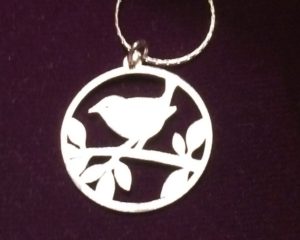
The last twenty pages of Haggards contain a long poem called The Wren in the Ash Tree. I’ve been going on about it , it seems like forever, and bits of it have appeared in Dark Mountain 9 and on this blog here, but now you will be able to get the whole thing.
It was inspired by Sorley Maclean’s ‘An Cuillithionn’ (‘The Cuillin‘, 1939), which I read two years ago. At that time,we hadn’t yet had the major political upheavals that were to happen, but I could see which way the wind was blowing, and I really thought we might be in for a major collapse of both environment and society. I was trying to chart both the progress of decay and the intellectual dereliction that made it possible, and, hopefully, find perspectives that might encourage us not to despair completely.
I chose the wren almost at random, because I love wrens, and because the song of wrens in the trees surrounding our garden often accompanies my writing. It was particularly fortuitous, as when I started research, I discovered its traditional use as the symbol of enlightenment, inspiration and creativity. I got hold of the definitive study of wrens The Wren by Edward A. Armstrong (published by Collins in 1955, and never bettered), and used his extensive research to structure the poem.
It is in seven cantos (including Prologue and Epilogue!) in tribute to Sorley Maclean, but it isn’t nearly as long. The cantos are
- The Bird that Brought the Fire, which sets the scene and introduces the wren marking its territory
- The Outcry, which is a protest from the earth about the wreck of our environment.
- Fuga Mundi, which evokes the responses I was hearing from activists and concerned people; the wren in this canto is surviving the harsh weather of winter
- There are Lights. This canto was originally going to be called Our Lady of Sorrows, and deal with compassion, but the election of Trump intervened, and more particularly, the Women’s March, so now it is about the networks of women who quietly resist destruction. The wrens in this canto are nest building, and it it noticeable that Armstrong sees this process as happening through negotiation and dialogue between male and female birds.
- Soil and Seed, which deals with both the literal soil beneath our feet, and, metaphorically, with the collective unconscious. In this canto the wrens are on the nest, and eggs hatch. Recent research suggests that chicks crack the egg shell only in response to the ‘whispering’ of a parent bird, and they can recognise their own parent.
- A Web of Speaking Beings was inspired by a quote from Colin Tudge which is used as the epigraph. I am very taken by Julia Kristeva’s idea of the human as a ‘speaking being’ whose identity is formed in dialogue with the people around him, but in this quote I saw that this applies to the whole of material existence. The young birds fledge at the end of this canto.
- In the Silence of Our Hearts talks about the moment of insight which might begin the process of regeneration.
By the end of the writing process, the poem wasn’t about collapse so much as regeneration. Donald Trump and Brexit may have divided people and caused havoc, but they have also united people who are simply not up for letting this happen. I started writing in despair, and I finished, not only with vision, but with gratitude, courage and hope.
I do hope you like it!
Leave a Reply